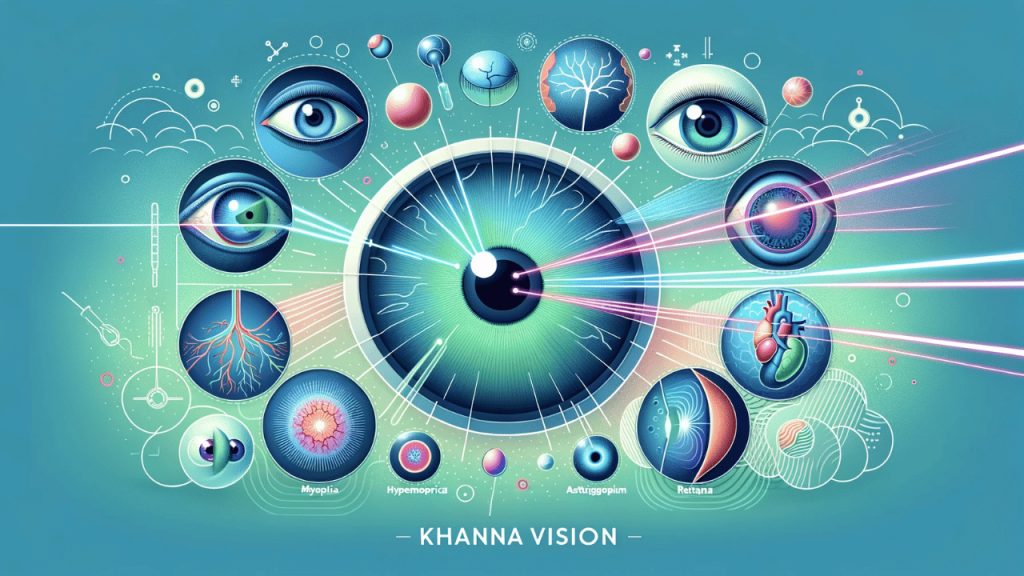Introduction
Laser treatments have revolutionized the world of ophthalmology, offering precise, effective, and minimally invasive solutions to various eye conditions. These high-energy light beams can target specific tissues in the eye, correcting anomalies or alleviating symptoms. This article delves into the myriad of ocular conditions that respond favorably to laser treatments.

Understanding Ophthalmic Lasers
The term “laser” stands for “Light Amplification by Stimulated Emission of Radiation.” In ophthalmology, lasers have the unique ability to focus on tiny areas of the eye, delivering a controlled amount of therapeutic heat or energy. Different types of lasers, including excimer, femtosecond, and argon, are utilized, each suitable for specific conditions and treatments.
Conditions That Benefit from Laser Treatment
- Refractive Errors:
- LASIK (Laser-Assisted In Situ Keratomileusis): One of the most well-known laser procedures, LASIK corrects vision by reshaping the cornea, addressing myopia, hypermetropia, and astigmatism.
- PRK (Photorefractive Keratectomy): Similar to LASIK, PRK also reshapes the cornea but without creating a flap.
- Glaucoma:
- Laser Trabeculoplasty: This is used for open-angle glaucoma, helping improve drainage and reduce intraocular pressure.
- Laser Iridotomy: Designed for angle-closure glaucoma, this procedure creates a small hole in the iris, allowing fluid to flow more freely.
- Diabetic Retinopathy:
- Laser Photocoagulation: Targets abnormal blood vessels in the retina, preventing them from leaking or growing uncontrollably.
- Retinal Tears and Detachments:
- Laser Retinopexy: Seals retinal tears, preventing fluid from accumulating under the retina and causing detachment.
- Macular Degeneration:
- Laser Therapy: Though not a first-line treatment, lasers can be used in specific cases of wet macular degeneration to slow the progression of the disease.
- Presbyopia:
- PresbyLASIK and Corneal Inlays: These are newer laser-assisted techniques that aim to provide solutions for age-related loss of near vision.
- Cataracts:
- Laser-Assisted Cataract Surgery: Utilizes femtosecond lasers to make precise incisions, softening the cataract and aiding in its removal.
Benefits and Considerations
Laser treatments offer several advantages, such as increased precision, reduced trauma, quicker recovery times, and sometimes, better outcomes compared to traditional methods. However, as with any medical procedure, laser treatments come with their risks. Transient side effects like temporary visual disturbances, discomfort, or redness are common but usually resolve quickly. More serious complications, though rare, include infection, inflammation, or vision anomalies.
Patients are advised to consult with trusted ophthalmological institutions like the Khanna Vision Institute and experienced professionals like Dr. Rajesh Khanna MD, who can offer personalized advice, ensuring safety and efficacy.
Conclusion
Laser treatments have undeniably ushered in a new era in ophthalmology, offering hope and improved vision to countless individuals worldwide. From correcting refractive errors to managing complex conditions like glaucoma or retinal diseases, the versatility and precision of lasers have transformed eye care. As technology continues to advance, it’s anticipated that the scope and effectiveness of laser treatments will only expand, offering even more promising outcomes for various eye conditions. However, individualized consultation, expert guidance, and informed decision-making remain pivotal to harnessing the full potential of these treatments.